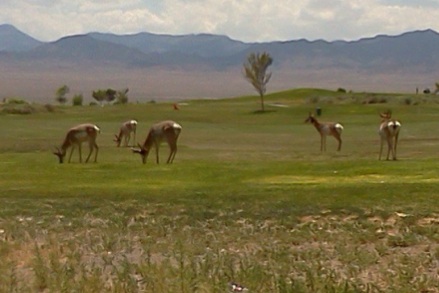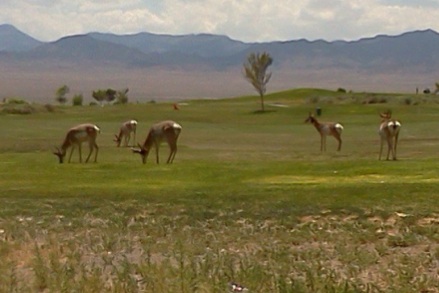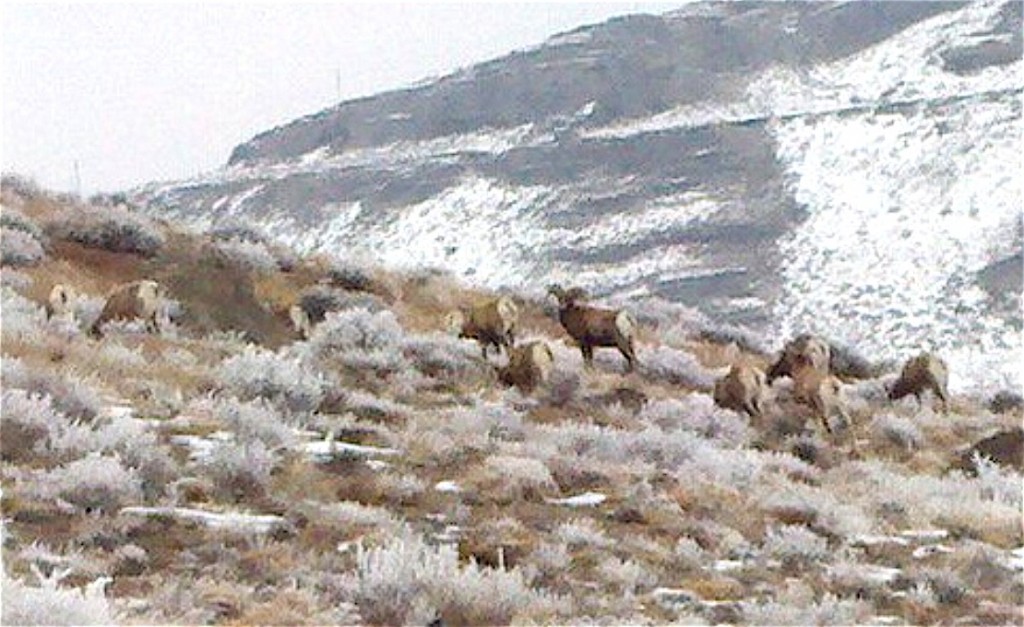A small band of Pronghorn antelope was captured snacking on the Wendover golf course last week by local Jayme Christie.
Once a rare occurrence visits from North America’s fastest land mammal are now almost commonplace especially during summer months while the pronghorn migrate in search of food water and mating partners.
Though not an antelope, it closely resembles the true antelopes of the Old World and one theory is that it fills a similar ecological niche due to convergent evolution. It is the only surviving member of the family Antilocapridae.
[media id=13 width=320 height=240]
It can run exceptionally fast, being built for maximum predator evasion through running, and is generally accepted to be the fastest land mammal in the Western Hemisphere. The top speed is very hard to measure accurately and varies between individuals; it is variously cited as up to 43 to 53 mph. It is often cited as the second-fastest land animal, second only to the cheetah. It can, however, sustain high speeds longer than cheetahs.
[media id=2 width=320 height=240]
By the 1920s, hunting pressure had reduced the Pronghorn population to about 13,000.[6] Protection of habitat and hunting restrictions have allowed their numbers to recover to an estimated population of between 500,000 and 1,000,000
Earlier this year a small band of the once rare Desert Bighorn was photographed near the Wendover Cemetery this week by Wendover, Utah Mayor Mike Crawford.
Considered an endangered species as late as the 1970’s with a total population estimated at less than 7,000 individuals, the Desert Bighorn has staged a remarkable come back in the last 20 years throughout its historic range. The total population of the species was estimated to be near 20,000 in 1993 and now be more than double that number.
The Desert Bighorn has become well adapted to living in the desert heat and cold and, unlike most mammals, their body temperature can safely fluctuate several degrees. During the heat of the day, bighorn often rest in the shade of trees and caves.
Southern Desert Bighorn sheep are typically found in small scattered bands adapted to a desert mountain environment with little or no permanent water. Some of the bighorn may go without visiting water for weeks or months, sustaining their body moisture from food and from rainwater collected in temporary rock pools. They may have the ability to lose up to 30 percent of their body weight and still survive. After drinking water, they quickly recover from their dehydrated condition. Wildlife ecologists are just beginning to study the importance of this adaptive strategy, which has allowed these small bands to survive in areas too dry for many of their predators.
In addition to restrictions on hunting and habitat preservation a key factor in the sheep’s and the antelopes’ resurgence could be due to the same species that almost made it extinct– human beings.
By creating new stable sources of water and food in the form of agriculture and even grass on golf courses and lawns human beings have turned much of the harsh high desert into a kindler and gentler habitat.
In addition the inadvertent introduction of invasive plant species primarily cheat grass have given Bighorns as well as prong horn antelope as well as domestic animals a whole new food source in areas once dominated by the inedible albeit native sagebrush.




